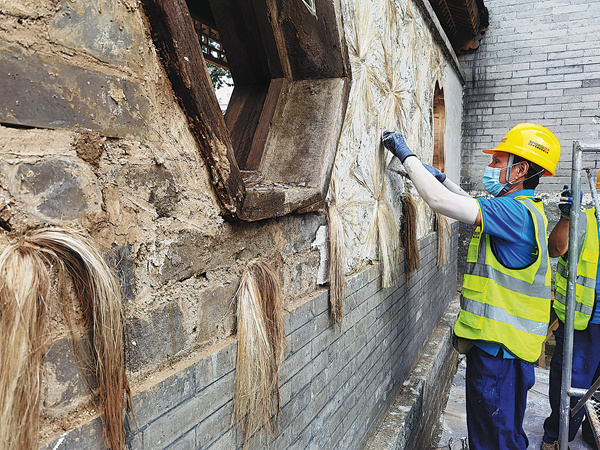

More than one century later, this exquisite architectural compound, which covers 34,000 square meters and includes more than 100 historical buildings, was in urgent need of renovation. A western part of the temple was even used as a crowded residential area where living conditions were poor.
"This is the best preserved former royal temple along the Grand Canal in Beijing," Wang Dan, director of Beijing Art Museum, says.
"It has great historical, artistic, social and cultural significance, but we have to better display its value."
According to Wang, Emperor Qianlong, an enthusiast for fine art, once wrote 46 poems for Wanshou Temple. The emperor also brought exotic artistic styles into the temple when it was renovated. A gate in the temple, for example, mixed ancient Roman, Baroque and Hindu art with traditional Chinese patterns.
In 2018, to highlight the importance of Wanshou Temple in the cultural landscape of the Grand Canal, a major renovation, the fifth in history, was launched covering about 10,000 square meters of the compound.